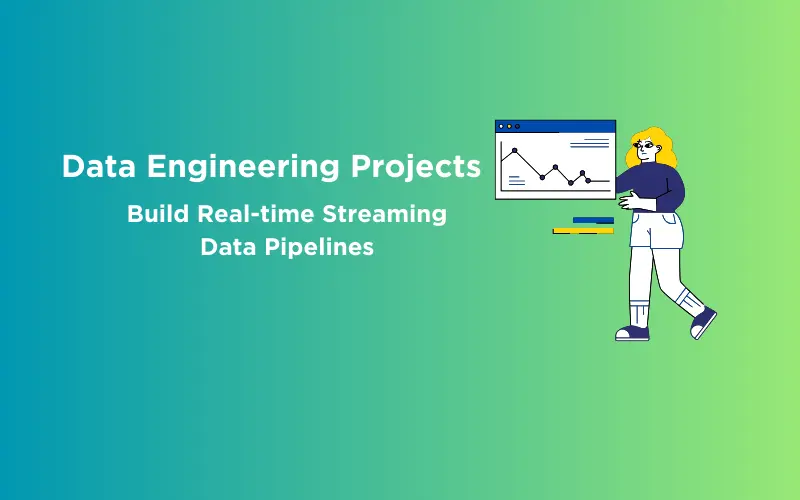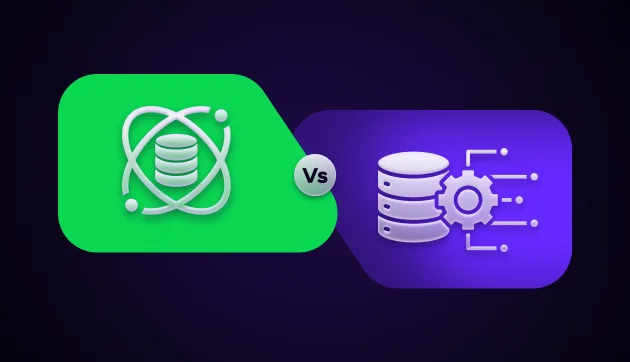![Best Practices for Data Quality Assurance in Data Engineering [2025] 1 Post thumbnail](https://www.guvi.in/blog/wp-content/uploads/2024/05/Best-Practices-for-Data-Quality-Assurance
In-Data-Engineering-2025.webp)
Best Practices for Data Quality Assurance in Data Engineering [2025]
Mar 06, 2025 4 Min Read 4254 Views
(Last Updated)
In our data-driven world where everything is ruled by data, having high-quality data is essential for making smart business decisions. But how can we ensure the data generated is of high quality?
That’s where Data Quality Assurance (DQA) comes into play. It is all about making sure that the data you collect and use is accurate, consistent, and reliable. This is a whole sub-genre of study under data engineering that lets you refine the data you collect making sure it is of the highest quality.
Whether you’re a beginner or have some experience in data engineering, knowing data quality assurance can make a big difference. This article will help you gain a basic understanding of what data quality assurance is and some best practices to do so.
So, without further ado, let us get started on data quality assurance.
Table of contents
- What is Data Quality Assurance?
- Best Practices for Data Quality Assurance in Data Engineering
- Define Clear Data Quality Goals
- Set Up Data Governance
- Use Data Quality Tools
- Validate and Verify Your Data
- Conduct Regular Data Audits
- Track Data Lineage
- Implement Master Data Management (MDM)
- Train Your Team and Raise Awareness
- Aim for Continuous Improvement
- Encourage a Collaborative Culture
- How to Start Implementing Data Quality Assurance
- Conclusion
- FAQs
- How do you measure data quality?
- What tools are commonly used for Data Quality Assurance?
What is Data Quality Assurance?
![Best Practices for Data Quality Assurance in Data Engineering [2025] 2 What is Data Quality Assurance?](https://www.guvi.in/blog/wp-content/uploads/2024/05/1-7-1200x628.webp)
Before diving into the best practices for data quality assurance, let’s talk about what we mean by it. As we mentioned earlier, data quality assurance is a subset of Data Engineering that lets you collect the highest quality data.
Data Quality Assurance (DQA) is the process of making sure that the data you collect and use is accurate, complete, consistent, and reliable.
It’s like a quality check for your data, ensuring it meets specific standards and is good enough for making decisions.
By regularly checking and cleaning your data, you can trust that the information you’re working with is correct and useful.
Data quality assurance refers to how good your data is based on factors like:
- Accuracy: Is the data correct?
- Completeness: Is any data missing?
- Consistency: Is the data the same across different sources?
- Timeliness: Is the data up-to-date?
- Relevance: Is the data useful for your needs?
By answering these questions, you’ll get the best quality data that can help you make informed and accurate decisions for a business.
Learn more: Best Way to Learn Data Engineering
Best Practices for Data Quality Assurance in Data Engineering
![Best Practices for Data Quality Assurance in Data Engineering [2025] 3 Best Practices for Data Quality Assurance in Data Engineering](https://www.guvi.in/blog/wp-content/uploads/2024/05/2-7-1200x628.webp)
Now that you have a basic idea of data quality assurance and why it is important in data engineering, it is time for you to learn about the best practices for data quality assurance.
If you are someone who’s new to Data Engineering, consider enrolling in a professionally certified online Data Engineering course offered by E&ICT, IIT-Kanpur that not only teaches you the basics of Data Engineering but also helps you gain practical experience with an industry-grade certificate.
Let us now see the best practices for data quality assurance in data engineering:
1. Define Clear Data Quality Goals
You need to set clear goals for what good data looks like. Think about:
- Accuracy: Your data should reflect real-world information accurately.
- Completeness: Make sure all necessary data is there.
- Consistency: The same data should be consistent across all platforms.
- Timeliness: Your data should be current and updated regularly.
- Relevance: Ensure the data is useful for the task at hand.
2. Set Up Data Governance
Data governance means having rules and people in place to manage data quality. This includes:
- Data Stewards: Assign people to take care of data in different areas.
- Policies and Standards: Create rules for how data should be handled and make sure everyone follows them.
- Data Catalogs: Keep a record of where your data comes from and how it should be used.
3. Use Data Quality Tools
There are many data engineering tools available to help you keep your data clean and accurate, such as:
- Automated Tools: Use software like Talend or Informatica to check data quality automatically.
- Data Profiling: Regularly examine your data to understand its structure and identify problems.
- Data Cleansing: Use tools to fix or remove bad data.
4. Validate and Verify Your Data
Make sure your data is correct from the start by:
- Validation Rules: Set rules to check data when it’s first entered.
- Verification Processes: Regularly compare your data with trusted sources to ensure accuracy.
5. Conduct Regular Data Audits
Regular checks help you maintain high data quality. This involves:
- Internal Audits: Your team reviews the data quality and ensures compliance with your rules.
- External Audits: Get outside experts to review your data and provide an unbiased opinion.
Also Explore: 9 Amazing Real-World Data Engineering Applications Around Us!
6. Track Data Lineage
Knowing where your data comes from and how it changes is crucial. This means:
- Tracking Data Flow: Keep records of how data moves from one place to another.
- Impact Analysis: Understand how changes in your data sources affect overall data quality.
7. Implement Master Data Management (MDM)
MDM helps you manage your core business data so that it’s accurate and consistent. This involves:
- Single Source of Truth: Ensure that key data is consistent across your organization.
- Data Integration: Combine data from different sources to get a unified view.
8. Train Your Team and Raise Awareness
Make sure everyone understands the importance of data quality by:
- Employee Training: Regularly train your team on data quality practices.
- Awareness Campaigns: Keep everyone informed about the importance of good data.
9. Aim for Continuous Improvement
Data quality is an ongoing process. To keep improving:
- Feedback Loops: Set up ways to continuously monitor and improve data quality.
- Root Cause Analysis: When problems occur, find out why and fix the underlying issues.
10. Encourage a Collaborative Culture
A collaborative approach helps address data quality issues more effectively. This includes:
- Cross-Functional Teams: Encourage teamwork between data engineers, analysts, and business users.
- Open Communication: Create an environment where data quality issues can be openly discussed and resolved.
Explore: How to Become a Freelance Data Engineer?
How to Start Implementing Data Quality Assurance
![Best Practices for Data Quality Assurance in Data Engineering [2025] 4 How to Start Implementing Data Quality Assurance](https://www.guvi.in/blog/wp-content/uploads/2024/05/3-8-1200x628.webp)
The previous section must have been an eye-opener for you and it also might feel overwhelming to implement. But trust me, it is as easy as any other concept in data engineering.
Here’s a simple plan to get you started:
- Assess and Plan
- Current State Assessment: Look at your current data quality.
- Identify Gaps: Find out what needs to be improved.
- Plan: Create a plan to fix these issues, including who will do what and when.
- Develop Policies
- Create Policies: Write down your data quality rules.
- Communicate Policies: Make sure everyone knows and understands these rules.
- Choose and Use Tools
- Evaluate Tools: Find the right tools for your needs.
- Implement Tools: Start using these tools to manage your data quality.
- Monitor and Report
- Continuous Monitoring: Keep an eye on your data quality all the time.
- Regular Reporting: Share reports on data quality with your team.
- Train and Build a Culture
- Conduct Training: Teach your team about data quality regularly.
- Promote Culture: Encourage everyone to value and maintain good data quality.
By following these practices, you not only ensure your data is of the highest quality but also develop a habit of checking each and every piece of data which helps you in the long run as a data engineer.
If you want to learn more about Data Engineering, consider enrolling in GUVI’s E&ICT, IIT Kanpur Data Engineering Certification which not only teaches you the concepts but also helps you gain practical knowledge.
Also Read: Top 15 Data Engineering Interview Questions and Answers
Conclusion
In conclusion, data quality assurance is an ongoing effort that requires dedication and teamwork. By following these best practices, you can significantly improve the quality of your data, leading to better decisions and more successful projects.
Remember, high-quality data is the backbone of any data-driven organization. Investing in data quality assurance will benefit you in the long run, helping you build a robust data infrastructure that supports your goals.
Also Read: 9 Most Creative Data Engineering Project Ideas To Kickstart Your Career
FAQs
Data quality is measured using various metrics such as accuracy, completeness, consistency, timeliness, and validity. These metrics help determine whether the data is fit for its intended use and meets the required standards.
Common tools for Data Quality Assurance include Talend, Informatica, Apache Griffin, and Microsoft SQL Server Data Quality Services. These tools help automate the processes of data profiling, cleansing, validation, and monitoring.
























Did you enjoy this article?